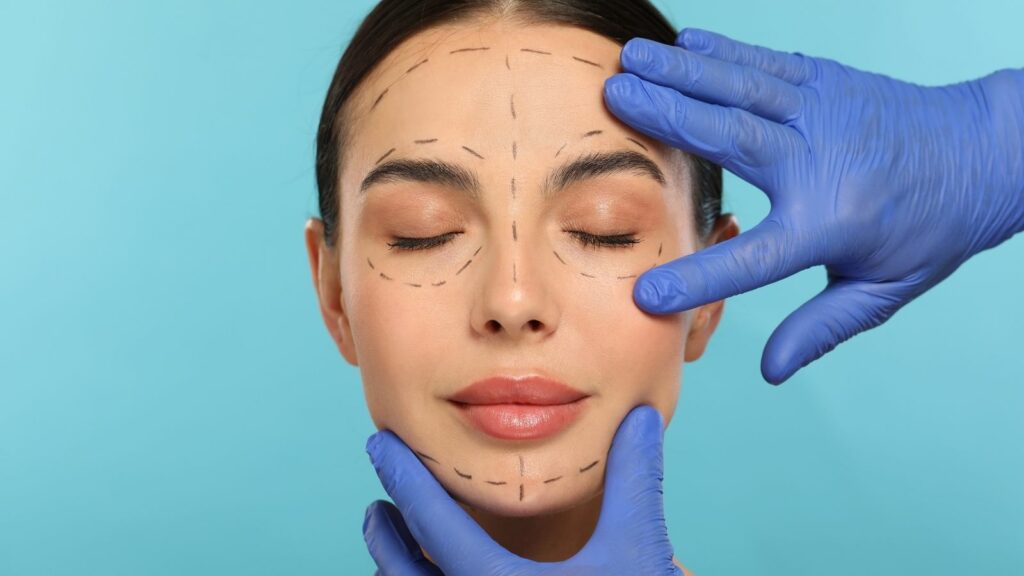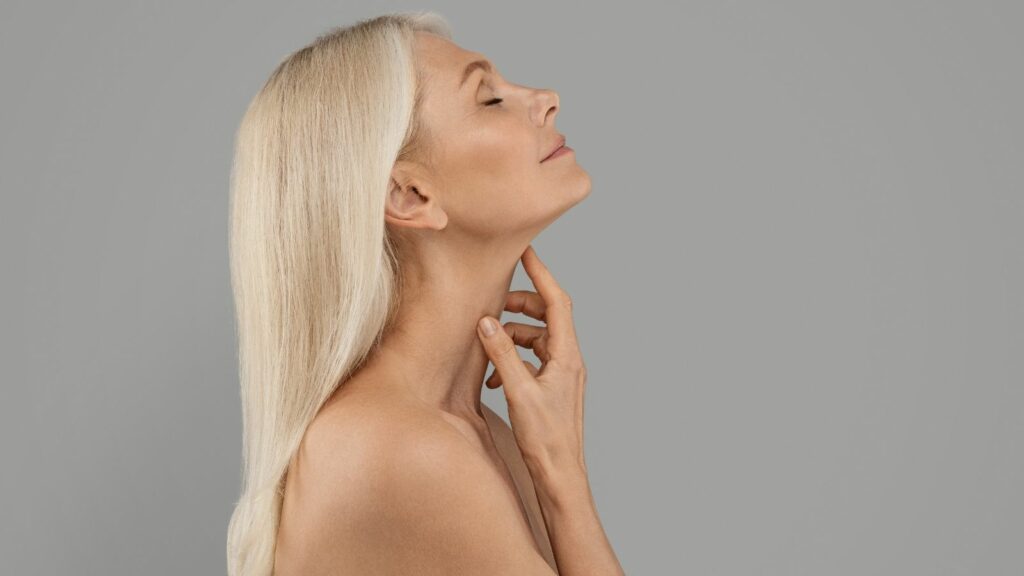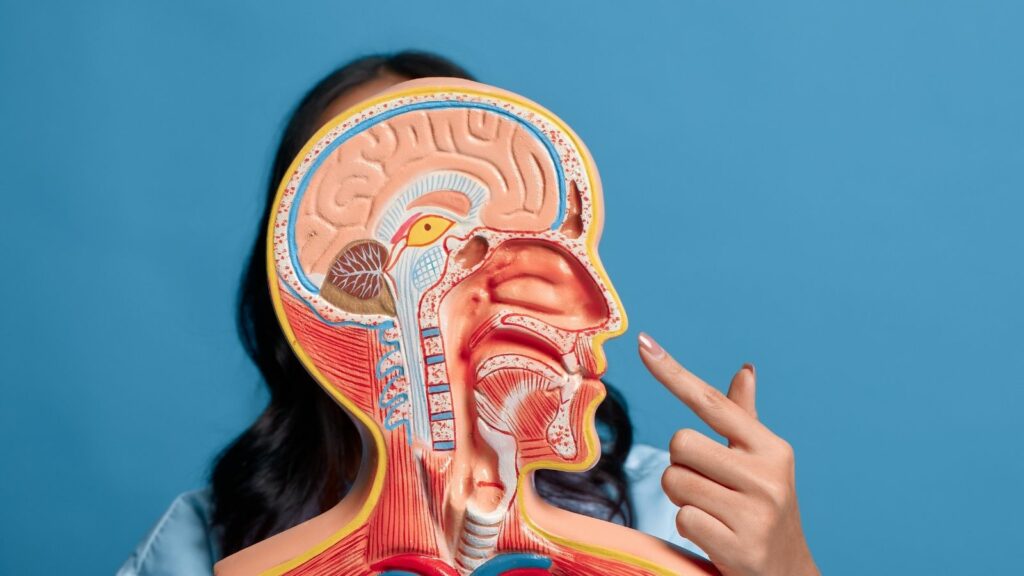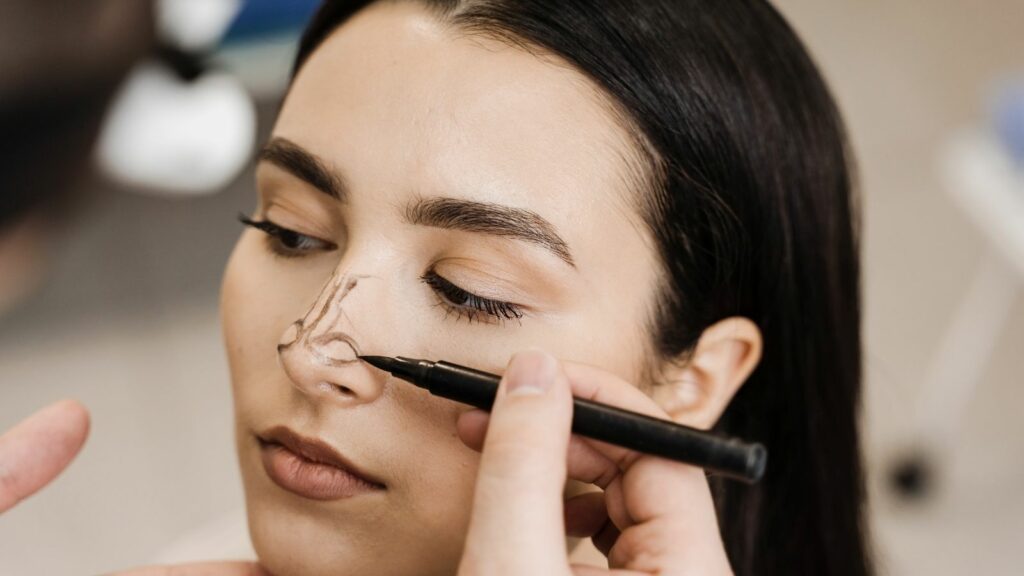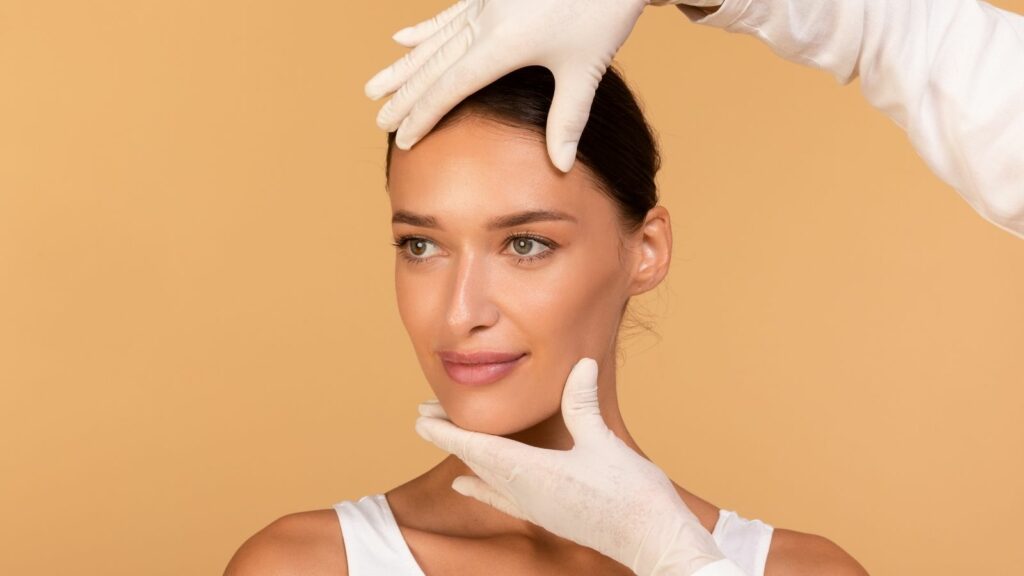Rhinoplasty (nose aesthetics) and blepharoplasty (eyelid aesthetics) are surgical procedures that reshape the nose and eyelids respectively, and these two surgeries are often combined in a single operation to maximize facial harmony with a holistic approach. Simultaneous intervention to these two central structures, which define the aesthetic character of the face, provides a more balanced and proportional appearance. This combined aesthetic strategy ensures that the aesthetic results are harmonious with each other and offers patients the comfort of a single recovery period, making it one of the most effective practices in modern facial aesthetic surgery.
Why is nose aesthetics (rhinoplasty) performed?
Many people think of nose aesthetics, or rhinoplasty, as a cosmetic procedure performed only to reduce or change the shape of the nose. However, the philosophy of modern rhinoplasty is much deeper and more comprehensive than this. This surgery is performed to achieve two fundamental goals that are inseparable from each other: aesthetics and function. While the nose forms the aesthetic center of the face, it also serves a vital function such as breathing. A successful operation should maximize both of these elements without separating them.
How an aesthetic touch will affect breathing or how an intervention aimed at improving breathing will change the external appearance of the nose must always be taken into consideration. For example, approaches frequently applied in the past that focused only on removing the nasal hump and reducing the cartilage could weaken the nasal roof over time and cause narrowing of the airway. As a result, a nose that might be aesthetically acceptable but functionally problematic could occur. Today’s understanding, however, is to plan holistically, accepting that every aesthetic maneuver has a functional reflection.
The main reasons for performing rhinoplasty can be grouped under two main headings.
Functional reasons primarily focus on solving structural problems that prevent healthy breathing. The most common functional problems are:
- Septum deviation
- Nasal valve insufficiency
- Turbinate hypertrophy
- Deformities caused by previous trauma
Aesthetic reasons aim to achieve overall facial harmony by bringing the shape and size of the nose into better balance with other facial features. Among the most commonly reported aesthetic complaints are:
- Hump on the nasal bridge
- Wide or asymmetric nasal tip
- Droopy nasal tip
- Overly upturned or “pig nose” appearance
- The nose being generally large relative to the face
- Wide nostrils
- Crooked or asymmetric nasal axis
It should be remembered that a significant portion of patients presenting with aesthetic concerns may have an underlying functional problem even if they are not aware of it. Modern rhinoplasty blends these two areas, making it the art of creating a nose that both looks beautiful and breathes healthily.
Why is the preoperative consultation with the doctor so important?
The foundations of a successful rhinoplasty operation are laid not in the operating room but in the room where the patient and surgeon first meet. The preoperative consultation is not just a session for meeting and providing information; it is also the most critical stage where the course, technique, and outcome of the surgery are determined, almost like drawing a roadmap. During this process, the patient undergoes a multidimensional evaluation physically, functionally, and psychologically, which is just as important. This evaluation allows the surgeon not only to understand what should be done but also what should not be done.
There are several key points carefully examined during this important meeting:
- Detailed medical history
- Comprehensive physical examination
- Psychosocial evaluation and expectation analysis
First, the patient’s medical history and specifically the nasal problems they have experienced are discussed. Information such as previous nasal surgeries, accidents or trauma, allergies, medications used regularly, and the duration of breathing complaints forms the first steps of the surgical plan.
Then comes one of the most critical stages: the physical examination. The surgeon analyzes the nose in detail, almost like a sculptor studying marble. Skin thickness is a factor that directly affects the outcome of the surgery. Thick skin reflects the changes in the underlying structure less, while thin skin can reveal even the smallest irregularity. In addition to external factors such as the strength and shape of the cartilages forming the nasal tip, the structure of the bony roof, and the symmetry of the nostrils, the inside of the nose is also examined in detail with endoscopic cameras. Deviations in the septum, turbinate conditions, and other structural problems that obstruct the airway are identified in this way.
Finally, the psychosocial evaluation, perhaps the most important assessment, is performed. The surgeon tries to understand why the patient wants this surgery, their sources of motivation, and their expectations from the outcome. In aesthetic surgery, the patient being psychologically ready and having realistic expectations is just as important as the surgeon’s technical skills. A patient who expects all life problems to be solved with surgery, wants to look like someone else, or has a perfectionist mindset expecting zero error is likely to experience disappointment after the operation. At this point, computer-aided simulation programs come into play. These programs help align the patient’s expectations with what the surgeon can realistically achieve. Visualizing possible outcomes plays an invaluable role in grounding expectations in reality. In short, this first meeting is the foundation where a trust-based doctor–patient relationship is established, all questions are answered, and most importantly, a personalized and optimal surgical plan is created.
What are the differences between open and closed rhinoplasty?
One of the topics patients are most curious about when it comes to rhinoplasty is whether the surgery will be performed “open” or “closed.” These two terms refer to surgical approaches that describe how the surgeon accesses the nasal bone and cartilage structure. Despite the long-standing debate over “which is superior,” current scientific data and modern surgical understanding indicate that both techniques can produce excellent results in experienced hands. What matters is not the technique itself but the surgeon’s ability to determine which technique is appropriate for which patient.
Open Rhinoplasty
In this technique, in addition to the incisions made inside the nostrils, a small incision is made on the skin bridge called the “columella,” which separates the two nostrils. This incision is usually inverted “V” or stair-shaped and becomes almost invisible when healed. With this added incision, the nasal skin is lifted as a whole, allowing the surgeon to work with a full view of all the anatomical structures (cartilage and bone). Some distinct advantages of this approach include:
- Wide field of view and full control
- Ease of placing precise sutures and grafts
- Superior control in cases with severe asymmetry or deformity
- Ideal for revision surgeries
For these reasons, open rhinoplasty is considered the gold standard in complex cases requiring nasal reconstruction, such as previously operated noses, significant deformities of the nasal tip, or major deviations.
Closed Rhinoplasty (Endonasal)
In this technique, all incisions are made inside the nostrils. There is no externally visible incision or scar. The surgeon works through these inner incisions with a limited field of view. This approach also has its own advantages:
- No visible external scar
- Better preservation of soft tissue and vascular structures
- Potentially less postoperative swelling
- Potentially shorter recovery period
Closed rhinoplasty is generally preferred for first-time surgeries in suitable patients who do not require major structural changes, where the plan involves mainly correcting the dorsal hump or making minimal changes to the nasal tip.
What do structural and preservation rhinoplasty philosophies mean?
The most significant development in rhinoplasty surgery in recent years is the change in the fundamental philosophy of the procedure. The old “the more you remove, the better” or “reductive” mentality has been replaced by much more sophisticated approaches that prioritize the natural structure and long-term durability of the nose. These modern philosophies are known as structural and preservation rhinoplasty. Both approaches view the nose not as an organ to be reduced, but as a structure that must be reshaped aesthetically while strengthening its skeletal integrity.
- Structural Rhinoplasty: “Demolish and Rebuild”
Structural rhinoplasty represents a revolutionary shift in rhinoplasty surgery. The fundamental principle of this philosophy is to strengthen the existing nasal framework, which may be weak or misshapen, by reconstructing it with cartilage grafts taken from the patient’s own body (usually septal cartilage, ear cartilage, or rib cartilage). This approach emerged as a solution to problems that developed over time after surgeries performed with old techniques. When only the hump was removed and cartilages were weakened in the past, tissue contraction during healing could cause the nasal tip to droop, the nasal bridge to collapse, and breathing problems to develop.
Structural rhinoplasty creates a strong internal framework capable of resisting these negative forces. Much like strengthening the foundation and columns of a building, the supporting structures of the nose are reinforced with sutures and cartilage grafts. This ensures the longevity of aesthetic results while preserving or improving the breathing function of the nose.
- Preservation Rhinoplasty: “Shape Without Destroying”
Preservation rhinoplasty goes one step beyond the structural approach, aiming to reshape the nose with minimal intervention to its natural anatomy while respecting the tissues. Instead of “destroying and rebuilding,” it focuses on preserving the existing structures and repositioning them millimetrically. The key components of this approach include:
Dorsal Preservation: Instead of rasping or cutting the nasal hump, this technique lowers the entire nasal dorsum by removing bone and cartilage from underneath (push-down/let-down). This preserves the natural roof structure and the anatomical connections critical for the airway.
Preservation of soft tissues and ligaments: Incisions are made from an anatomical plane that protects critical ligaments and vascular structures. This reduces postoperative swelling, accelerates healing, and preserves the natural mobility of the nasal tip.
Cartilage preservation: Instead of removing large amounts of cartilage to refine the nasal tip, special suturing techniques are used to reshape and preserve the cartilages.
What is evaluated before blepharoplasty surgery?
A successful eyelid aesthetic procedure (blepharoplasty) is not simply about removing excess skin or fat bags. The secret to success lies in the careful and comprehensive evaluation performed before the surgery. This evaluation is like a detective process, identifying hidden risks that may lead to complications and developing a proactive strategy to prevent them. Each step of the examination is designed to reveal conditions that, if overlooked, could cause unwanted postoperative outcomes.
Some important points that must be considered in this critical evaluation process include:
- Position of the eyebrows
- Detailed analysis of the upper eyelid
- Lower eyelid laxity
- General eye health
First, the position of the eyebrows is examined. This is perhaps one of the most frequently overlooked yet most important steps. Drooping eyebrows can make excess upper eyelid skin appear much more pronounced than it actually is. Patients often unconsciously contract their forehead muscles to lift the eyebrows. When these muscles are relaxed during the examination, the true position of the eyebrows becomes evident. If droopy eyebrows are not corrected and only the upper eyelid skin is removed, the result may be disappointing and can even lead to serious problems such as incomplete eye closure due to excessive skin removal. Therefore, if brow ptosis is present, a brow lift should be planned together with blepharoplasty.
During the upper eyelid evaluation, the amount of excess skin, the location of fat herniation, and most importantly, whether there is true eyelid ptosis are examined. Ptosis is different from skin sagging; it refers to the actual lowering of the eyelid margin and requires a different surgical intervention.
Lower eyelid laxity is the most crucial test to prevent postoperative complications such as ectropion (outward turning of the eyelid) or downward pulling of the lid. Simple “snap-back” and “distraction” tests are used to measure the strength of the eyelid. If laxity is detected, it must be corrected with an additional procedure (canthopexy/canthoplasty) during blepharoplasty. If this precaution is not taken, even the trauma from the surgery itself may be enough to alter eyelid position.
Finally, the patient’s general eye health is evaluated. Conditions such as dry eye syndrome must be questioned, as they may worsen after blepharoplasty. Tear tests may be performed if necessary, and special preoperative and postoperative measures are taken. This holistic approach ensures not only an aesthetically pleasing result but also the highest possible protection of vision and eye health.
Can nose and eyelid aesthetics be performed at the same time?
Yes, performing rhinoplasty (nose aesthetics) and blepharoplasty (eyelid aesthetics) in the same session is a very common, safe, and logical practice in facial aesthetic surgery. This combined approach, which considers the face as a whole, offers many important advantages in terms of both aesthetic results and patient comfort. Simultaneously treating these two central facial areas, which are located at the very center of the face and significantly influence expression, allows for a much more harmonious and balanced result, completing the entire puzzle rather than correcting the pieces separately.
When properly planned and performed on the appropriate candidate, this combined approach offers many benefits:
Some of the most important advantages are:
- Holistic aesthetic harmony and balance
- A single recovery period
- Cost advantage
- Single anesthesia and reduced surgical stress
- Simultaneous functional improvement
The most notable benefit is holistic aesthetic harmony. The face is like an orchestra, and all instruments must be in harmony. Sometimes, when only the nose is corrected, the tired appearance of the eyes may become more pronounced—or vice versa, rejuvenated eyes may highlight an unrefined nose. Treating both areas simultaneously allows the surgeon to establish a much more harmonious balance by observing overall facial proportions and the golden ratio.
The most practical benefit for patients is undoubtedly the single recovery period. Two separate surgeries mean two separate anesthesia sessions, two separate hospital stays, and most importantly, two separate periods away from work and social life. With combined surgery, all these processes are completed at once. Swelling, bruising, and rest occur in a single period, allowing patients to return to normal life in a much shorter overall time.
The cost advantage is also significant. When hospital, anesthesia, and surgical fees for two separate operations are combined, they usually exceed the cost of a single combined surgery.
Additionally, undergoing the physical and psychological stress of surgery once instead of twice offers a major advantage in terms of patient comfort.
Finally, this approach can address not only aesthetic issues but also functional problems at the same time. For example, a breathing problem due to septum deviation and vision impairment due to upper eyelid drooping can be successfully corrected in the same operation.





